The meaning of the icon is the watchful eye. Icon "the all-seeing eye of God". Video: icon of the Mother of God “Joy of all who mourn”
It is quite difficult to understand the meaning of the All-Seeing Eye icon, this mystical Orthodox icon. But this symbol has been used since ancient times not only in Christianity, but in many religions of countries and peoples. Mysterious symbolism carries a deep meaning and, we hope, you will be interested in tracing its meaning with us in different cultures and eras.
In private homes, holy scenes were in the form of large framed lithographs, illustrated magazines, Catholic newspapers and calendars, even down to small cards that were given to children in catechism and school, and distributed to families at home. first communions and anniversaries of the dead. In Ezyaog, at the site of the visions, sacred cards were sold at souvenir stands. And the seers began to receive messages from the most famous saints, whose images they saw in stores.
Two of these photographs can be identified. One of the seers bears some resemblance to the image of the Sacred Heart of Jesus sold in Ezzoog. The photographs of some seers also mention famous ancient works of art such as Zurbaran, Murillo and Rubens. It seems that in any case there has been a change in regard to centuries of precedent. Previously, those who tried to find out whether visions were divine, diabolical or false, took into account the seer's feelings - be it joy or horror - and the physical evidence that the divine being left him - a twisted hand or a mouth that could no longer be opened.
Symbolizes omniscience, the all-seeing eye, the ability to intuitively see. The eye represents all the solar gods, who have the fertilizing power of the sun, which is embodied in the king god.
All-Seeing Eye of God meaning
The meaning of the All-Seeing Eye of God. Plato calls the eye the main solar instrument. On the one hand, it is the mystical eye, light, insight, knowledge, intelligence, vigilance, protection, stability and determination, but on the other hand, it is the limitation of the visible. Ten thousand heavenly eyes are the stars, the eyes of the night, personifying omniscience and vigilance.
But they took little interest in the state of the seer during the vision, except that he was awake or dreaming; artists illustrated this tendency in their representations of saints, and undoubtedly their photographs helped those who practiced trance to know what they should look like. It was at the beginning of the modern era that Europeans learned that in Central Asia or Siberia, Africa, the Middle East and North and South America There are other less orthodox trances - people who serve as intermediaries with the other world, in which music and drugs are often used.
In relation to ritual architecture, the eye is a hole directed towards the heavens in the vault of a temple, cathedral, building or any other traditionally created center of the world, representing a solar door that provides access to the celestial worlds.
The eye of the heart is a sign of spiritual insight, intellectual intuition. The eye can also represent an androgyne, formed from an oval female symbol and a round male one. One eye can symbolize evil, as in the example of the Cyclops and the destroying monsters. The eye in the center of the triangle is the all-seeing eye of the Lord, a symbol of omniscience and omnipresence.
In Europe there were traditions of forbidden ecstasies called witchcraft and devil worship, and one wonders whether epidemics of witchcraft and new information from abroad have brought some detours human brain, to evaluate or confirm “good” trances.
Perhaps it was because artists painted these trances and transports so convincingly that scientists also approached the issue visually, through very young photography. Both of them were not only interested in religious ecstasy, but also redefined the entire spectrum of trance. In the twenties, Pierre Janet tried to do something more subtly, in a work called From Anxiety to Ecstasy, which also reproduced photographs of mental patients, to highlight the nuance between religious ecstasy and anxiety.
In the West the right eye signifies the Sun, day and future, the left eye signifies the Moon, night and past.
In the East the situation is the opposite. The symbolism of the eye can be taken on by a pheasant feather.
Among the American Indians the eye of the heart sees everything. This is the eye of the Great Spirit and omniscience.
Buddhists the eye symbolizes light and wisdom. The Buddha's third eye, the flaming pearl, is spiritual consciousness and transcendental wisdom.
Let's retrace the steps that led the lights photographed to look like a saint in a trance. the process is identical to the reinforced consensus slowly forming on what "there was a holy place, its location, and divine beings who" you can see in their features and about. we find the same type of social selection of reality in these two processes. This accession to fame far preceded the activities of photographers and provides indicators that should have already been chosen. The qualities that allowed them to achieve fame included "attendance, beauty, fact", having extremely convincing trances and communicating the most relevant messages.
In Celtic epic the evil eye, symbolizing evil intentions and envy, is contrasted with a good heart, nobility and compassion.
In Chinese and Japanese symbolism the left eye is the Sun, the right eye is the Moon.
In Christianity the eye symbolizes the all-seeing God, omniscience, power, light. The light of the body is the eye (Matt. 6:22). The seven eyes of the Apocalypse are the seven spirits of God. The eye in the triangle represents the Head of God; and in a triangle surrounded by a radiant circle - her infinite holiness. The eyes are the emblem of Saints Lucy and Ottilie.
There was a cultural bias against married women, and a bias for teenage girls, boys, and children of both sexes. In these favored categories, some LEDs distinguished themselves quite quickly after the start of vision. The sudden rise among many sighted children, "stars" like Benita Aguirre is an example of this process. But, in the second month, the most sophisticated observers have already noticed the similarity of some well-known indicators with works of art. Well, it's exactly the same. The care of capturing this likeness in the film was taken by three photographers who were completely convinced by the visions and seers and came to Ezekio predisposed to them.
The Egyptians the eye has extremely complex symbolism - the Eye of Horus, Atshet, the all-seeing. It was supposed to be the North Star and a symbol of illumination, the eye of the mind. The eye and eyebrow of Horus signify strength and power. The two winged eyes are North and South as two divisions of the heavens, the Sun and the Moon, celestial space. The right eye is the Sun, Ra and Osiris, the left is the Moon and Isis. The Eye of Pa is also Uraeus. The Eye of Horus could be associated with the moon and its phases and, at the same time, symbolize offerings to the gods in temples.
Two of them were converted a dozen years ago to Limpia, José Martinez from Santander had worked there before and his postcards from Limpia were sold at his stand in Ezgiog. After selling his photographs in Ezoyog for three years, he became a Carthusian. The third dedicated photographer, Raymond de Rigne, was a novelist of Tours who admired Huysmans, championed nudism, and had a mystical experience at Lourdes. At Ezzioga he met several seers who confirmed to him on behalf of the Virgin Mary that her second marriage, which was not celebrated in the church, was nevertheless recognized by God.
In Ancient Greece the eye symbolizes Apollo, the observer of the heavens, the Sun, which is also the eye of Zeus (Jupiter).
The Hindus Shiva's third eye (the pearl in the middle of the forehead) represents spiritual consciousness, transcendental wisdom. Varuna's eye is the sun.
In Iranian mythology Good Shepherd Yima has the eye of the sun and the secret of immortality.
Rigno was convinced that his photographs documented divine intervention and thought that they were "composed by the Virgin herself" to serve as evidence for the diocese's investigations. For this reason he sent prints to the Bishop of Vitoria. Rignot clearly had certain artistic models in mind. He wrote about one of Benita Aguirre's portraits: Murillo was proud to have succeeded in one of his Immaculate Testaments, this expression of inexpressible adoration.
Selectivity of photographers
The attitude of these devout photographers is reflected in every stage of the photographic process: in the choice of subject, the pose, off-frame and in the photographs they choose to sell. While the most famous visionaries had already been selected, the photographers made their choice among many who were less famous. It is likely that among the seers who were not selected, there were those who did not have a profile, whose trances were less convincing, or were simply not photogenic. The work of the reporter - photographer of the French photo magazine Wu - the skeptic with whom Rigne visited Ezzoogu - is somehow proof.
In Islam The eye of the heart is the spiritual center, the seat of absolute intelligence and enlightenment.
The Japanese Iza-naga's right eye gave birth to the moon god.
Among the peoples of Oceania the sun is a big eyeball. Plato believed that the soul has an eye, and the Truth is visible to him alone.
In Sumerian-Semitic mythology the eye personifies the Lord of the Sacred Eye Ea or Enki, where it symbolizes wisdom, omniscience, wakefulness.
Neither his face nor his attitude evoked the portrait of a saint. It is likely that she was not the only one excluded by favored photographers, and that others like her were also excluded. The expression that these photographers chose to capture from a particular visionary corresponds to another level of this choice. Rigne knew this phase well: “These supernatural moments were very fleeting, and I had to look at that face in delight for a long time in order to be able to understand it at the most beautiful moment.”
Rinier and the skeptical photographer identify another comparable phase of the selection process that the photographer excludes from the field. The photo below, taken by a skeptic, shows a father holding his child. Rinier waited until the mother took the little one in her arms, more like the Virgin Mary, and pushed her husband from the field, probably because the latter did not seem to be part of the Holy Family. Rigne wrote about the painting he made, reproduced on the left page, above: “Could Raphael have done a better job of painting the Virgin in ecstasy?”
Among the Phoenicians Kronos had two open and two closed eyes, which means being constantly awake.
All-seeing eye- in icon painting, a complex symbolic-allegorical composition symbolizing the All-Seeing God. Appears in Russian iconography from the end of the 18th century under Western influence.
The All-Seeing Eye can also be called a symbolic image of the All-Seeing Eye of God, inscribed in a triangle - a symbol of the Trinity.
One of his favorite themes was "Three Girls", a stereotypical picture of historical ideas about the Passion. In a sequence photographed by both Sicard and Rignot, Sicard first received Elcoro's Jesus in a trance under the gaze of the other seers and their assistants.
This picture did not seem convincing to him, since, as far as I know, he never used it, then Evarista Galdos was caught with a vision at the same time as Elcoro, and Sicart and Rigny photographed the couple. and moved closer to take a series of close-ups that spread out into the open air from the field, apparently reproducing the three women with the seer of Evariste as the Sorrowful Virgin. Photos made their final choice when they selected the photos they were going to paint and sell.
Eye of Ra, the main deity of the ancient Egyptians, also called the Eye of Horus (Wadjet)

Goddess of Wisdom Isis and Two Eyes of God Horus.
the picture symbolizes the unity of the male and female principles of the Universe
What does the All-Seeing Eye icon mean?
What does the All-Seeing Eye icon mean? An Egyptian symbol, a painted image of an eye with a spiral line underneath it is the emblem of the falcon-headed sky god Horus, a symbol of both his all-seeing power and the unity of the cosmos, the integrity of the universe. In the Western tradition, the right eye is considered a symbol of the active and solar principle, and the left – of the passive and lunar principle (a system opposite to the Eastern tradition).
The original Joaquin Sicart plates are in the attic of a Basque farm. The barbed wire above her head reinforces the theme of the Passion, the real Arzuaga and Galgani as sacrificial victims, and evokes Christ and the crown of thorns. In contrast to this type of documentary photographer, sculptors, painters and art filmmakers greatly influence their representation of reality and are much more capable of depicting the product of their imagination. It seems that what they created over the centuries fed the imagination of Ezekio photographers, who sought to subject artistic models to extremely malleable reality, or to capture a moving image as it passed through film. stereotypical pose.
According to ancient Egyptian myth, the lunar eye of Horus was torn out by Set in the battle for supremacy among the gods, but after Horus's victory in this battle it grew again. This myth became the reason for the extreme popularity of the Eye of Horus as an amulet to ward off evil. The Eye was also often depicted or carved on Egyptian tombstones to help the dead in the afterlife. Images of eyes with wings in ancient Egyptian iconography also denoted north and south.
Their ultimate goal was to evoke pious emotions that corresponded with the postures. These feelings were very valuable in the economy of Salvation, and the dramatic performances of Holy Week and practices like the Fasts of the Cross were organized to provoke them. For Rigny, the fact that his photographs were more likely to evoke such emotions than photographs suggested a supernatural origin. In his opinion, it was almost miraculous that photographers who had to work with real subjects who did not strike poses in the formal sense of the word had top scores than great artists.
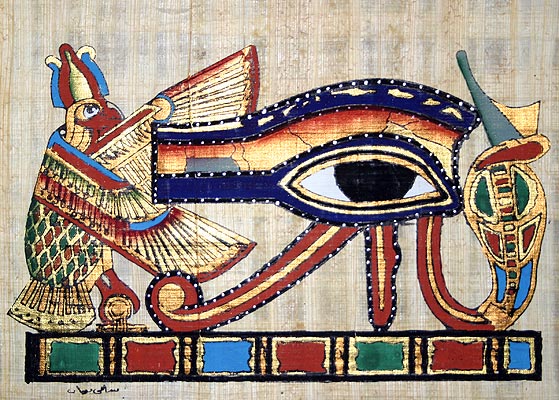
Heavenly eye of the god Horus
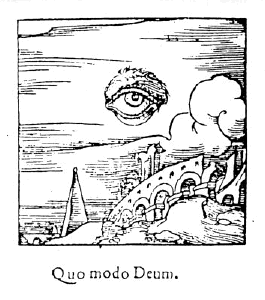
Alchemical woodcut showing the all-seeing eye of God floating in the sky
The mystical third eye, sometimes called the "eye of the heart", symbolizes spiritual vision, which is associated in various religions with different concepts: in Hinduism with the power of Shiva and the synthesizing power of fire; in Buddhism - with inner vision; in Islam - with supernatural clairvoyance. The third eye depicted on Shiva's forehead is also called the inner eye.
In Rigny's words: Artists go to great lengths to provoke sublime expressions in their models when they want to make mystical pictures. Don't take this photographer's statements literally. Long before the appearance of these miraculous photographs, quiz shows themselves created feelings of tenderness, fervor and adoration among their viewers. Before the arrival of the photographers, the seers already had a sacred drama, a kind of regular supernatural "sound and light" of which the audience was assured, guided by special trains and dozens of bus services.
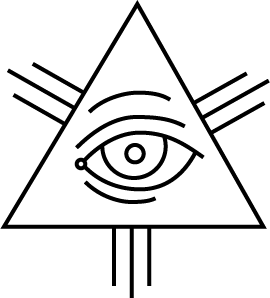
Christian version of the Eye of Providence, enclosed in a triangle, symbolizing the Trinity.
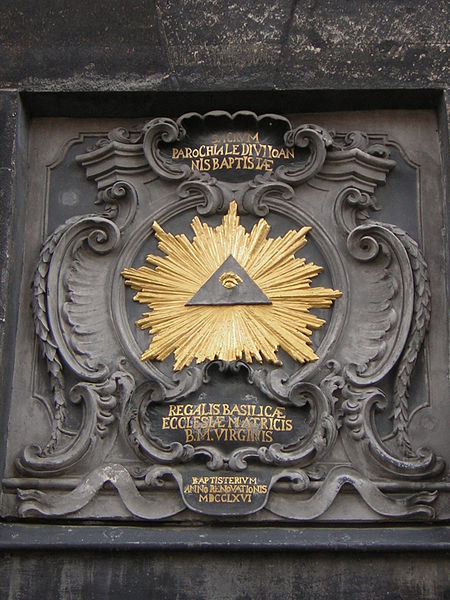
"All Seeing Eye" of Aachen Cathedral
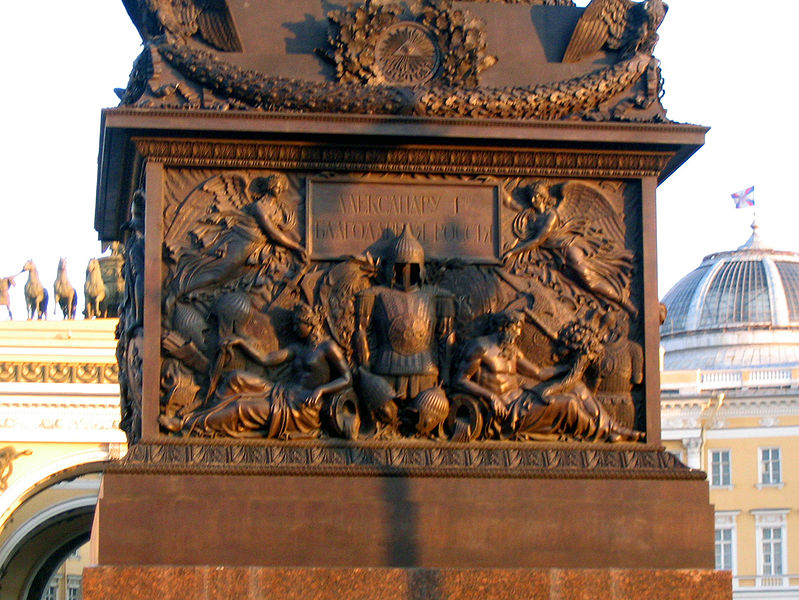
This audience, like the Greek choir, actively participated in providing music, prayers, and religious objects to bless and ask questions about Mary and the saints. Families, neighbors, parish priests and strangers seers were actively, if not unconsciously, actively selected, corrected, and rewarded, encouraging them to take on sacred roles. The seers themselves shared the same religious culture, which constituted a common repertoire of the highest gestures and views. The photographers did not create the scenes they captured, but did their best to improve them.
The “All-Seeing Eye” is decorated with a bronze bas-relief on the pedestal of the Alexander Column. It is located at the top of the bas-relief on the front side of the pedestal (facing the Winter Palace) surrounded by an oak wreath.
THE ALL-SEEING EYE OF GOD is one of the most complex symbolic iconographic compositions: the Lord is likened to the sun as a source of light, and the method of Divine knowledge is likened to an eye.
First, there is the idea of a common scenario, one of many memorials implemented by complex organizations. This was also what we saw as the future: the Apocalypse and the final judgment. We saw examples of different visual patterns that fueled this imaginary memory. All these are the fruits of the Catholic Church, a flexible and decentralized organization, one of the oldest in the West, with representatives and meeting places in all corners of Central and Southern Europe. In this offensive, modern opponents of Catholicism were implicitly identified with those who crucified Christ and made Mary suffer.
The first circle is central, with four rays emanating from it, ending behind the large circle with images of the evangelists or their symbols.
The second circle represents, as it were, a person’s face, on which four eyes, a nose and lips are placed. The inscription around the circumference: “My soul magnifies the Lord and my spirit rejoices in God my Savior.”
Above the second circle is the Virgin Mary with raised hands. And the third circle is intersected by many thick rays emanating from the center of the main one - the Sun of Truth - Jesus Christ, to the right and left of Whom it is written: “Plant my eyes on the faithful lands and with me.”
The inscription on the circumference: “The coal of Isaiah manifests the sun from the Virgin’s womb, rising in the darkness, giving enlightenment to those who are lost in prudence.”
The fourth circle, the largest, depicts starry sky with three seraphim and the inscriptions: “Seraphim is the word God,” or in this circle there are four angels, of which two are below with scrolls.
The entire icon is crowned by a circle, truncated at the bottom, in which the “Heaven of Heavens” is personified with three seraphim in it surrounding the Lord of Hosts, blessing with both hands; The Holy Spirit emanating from Him descends in the form of a dove onto the head of the Virgin Mary.
The figure of God the Father below is partly closed and surrounded by a halo, along the edges of which there is the inscription: “God from heaven grant me His radiance.” On the entire circumference of the fourth circle there is an inscription: “Holy, holy, holy is the Lord of hosts, fill heaven and earth with Your glory.” The Lord, surrounded by clouds, sits on a rainbow, at his foot is a seraphim with outstretched wings; On the Lord's chest is the Holy Spirit in the form of a dove.
On the corners there are four circles of evangelists, from the third circle to the fourth; on the circles there are names and interpretations: Matthew is written as an angel, the ambassador of the Lord; Marco is written orlim, fly to heaven; Luke is written Telchim, Peace; John wrote the lion, and laid it in the tomb.

THE ALL-SEEING EYE OF GOD 2004, Ivan Dymov Wood, gesso, tempera, oil.
The eye (in a triangle or oval) was actually found in ancient Byzantine iconography (there are examples of the 6th century) and was a symbol of God’s omniscience. By some knights (in particular, the Templars, that is, the templars - the guardians of the Holy Sepulcher), it was taken as a certain symbol of “knowledge” or “knowledge”.
Therefore, starting from the 12th century. began to appear on some Western icons of the Holy Trinity. From there he moved on to some icons in Russian churches in the 18th century. And it was also called the “All-Seeing Eye.” However, from the Templars, this sign passed into various Masonic symbols (even to the Grand Lodge of France, which explains its appearance on the dollar bill), and in the 20th century into occult symbolism.
In Christianity, the “All-Seeing Eye” is a non-canonical, although stable, image of Christian iconography. This symbol is also called the “Wakeful Eye of the Lord.” It is an image of an eye in a triangle from which rays emanate.
All-Seeing Eye on the Dollar
The eye in a triangle was used as an emblem by the magical society of Aleister Crowley, the Order of the Eastern Temple, Masonic lodges, Vietnamese Buddhists, Theosophists, Rosicrucians, etc. The All-Seeing Eye is depicted on the Great Seal of the United States and on the one dollar bill.
His images are quite common on body crosses, both Orthodox and other denominations, placed in the upper part of the cross (as if crowning it). It is also found in temple architecture and decoration (in the paintings of lampshades, altar decorations along with the dove of the Holy Spirit, on ripids, etc.).
Of these images, perhaps the most famous is the pediment of the Kazan Cathedral in St. Petersburg. It appeared in Russia in the 18th century, along with other Masonic symbols and paraphernalia, and was especially popular during the reign of Alexander II. Together with the motto “NOT TO US, NOT TO US, BUT TO YOUR NAME” it was placed on many objects, for example, medals to participants in the War of 1812...
It is also found in non-canonical images of the so-called. “New Testament Trinity” as a separate element, because the triangle framing the eye is interpreted in Christianity as a symbol of the Trinity. The most ancient version of this symbol is with the Egyptian “Eye of Ra” (right), which means God. It is he who is initially meant to be placed in the triangle...”
![]()
Sevastopol, Museum of the Black Sea Fleet.

Medal of Elizabeth Petrovna 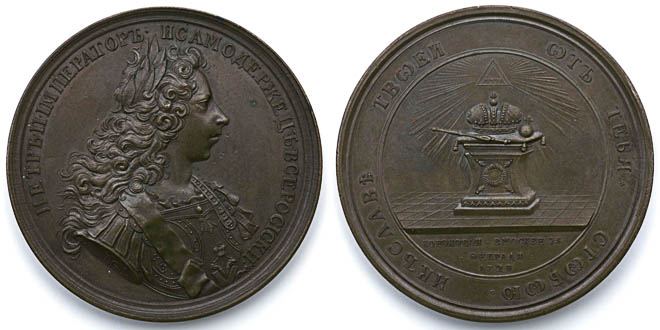
Medal for the Coronation of Catherine the Second, 1762 
Medal for the coronation of Nicholas the First 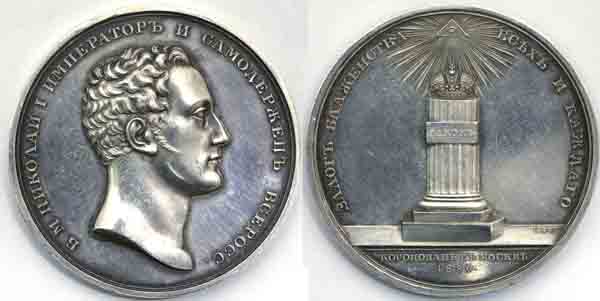
Medal of Catherine the Second, 1766. 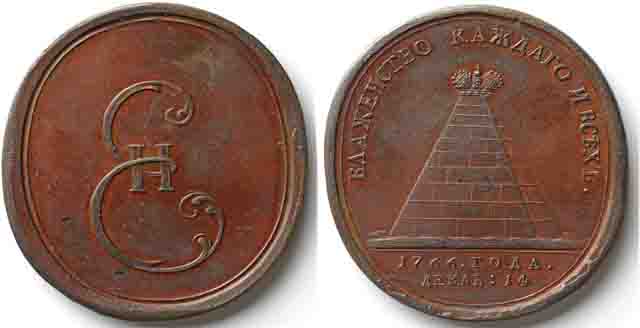
War against Napoleon 1812 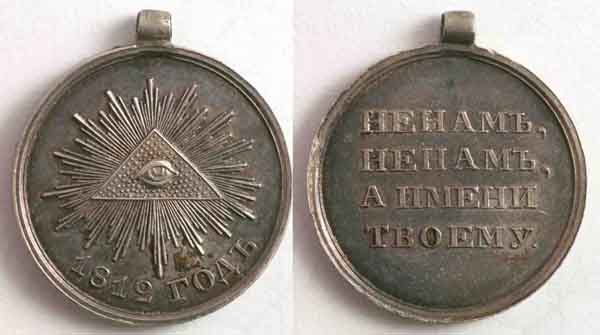
Medal "For the Capture of Paris" 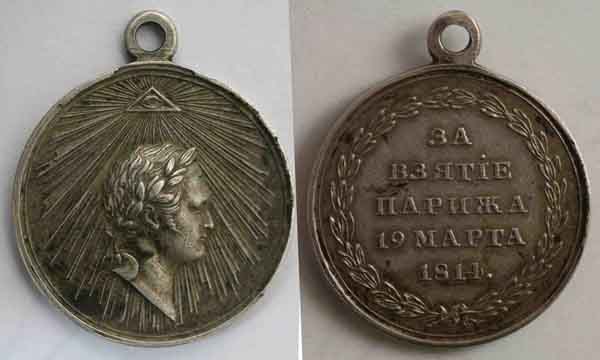
Medal of Nicholas the First 1849 “For the Pacification of Hungary and Transylvania” 
For the defense of Sevastopol 
Grand Duke Nikolai Alexandrovich 
Vienna Catholic St. Stephen's Cathedral. 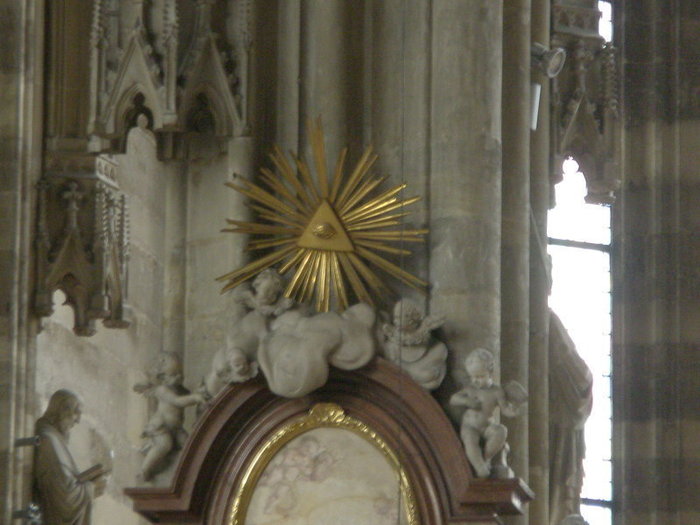
Lutheran Church in St. Petersburg 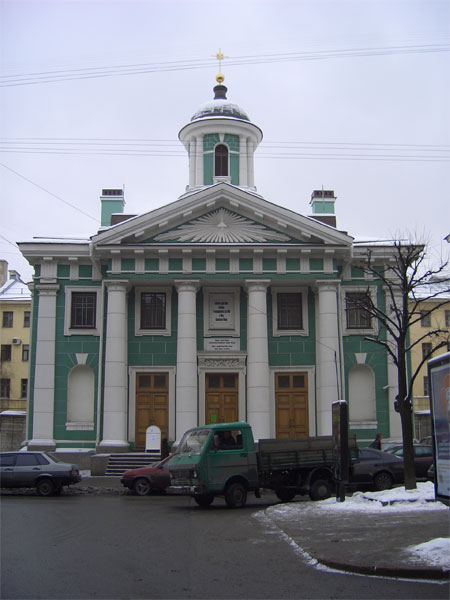
St. George's Hall of the Kremlin 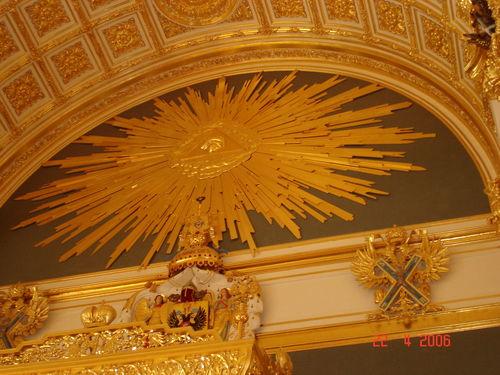
Mining Institute in St. Petersburg 
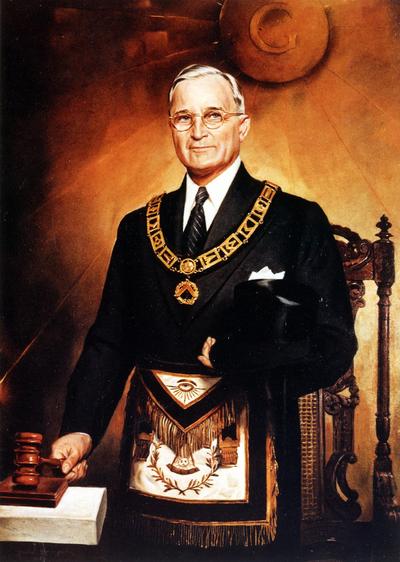
The most important symbol of the Masonic temple is the all-seeing eye or Radiant Delta. The Radiant Delta is usually located in the eastern part of the temple, and on both sides of it are the Sun (closer to the south) and the Moon (closer to the north). Radiant
Delta is a triangle with an eye placed inside it - a sign of enlightenment or the principle of consciousness, otherwise, the all-seeing eye B:. WITH:. B:., constantly present at all work of the lodge, creating the energy of the presence of B:. WITH:. IN:. when carrying out ritual work, constant radiation is an affirmation of being.
A mathematical point that has no dimensions, but is located everywhere, fills the infinity of space. It is also a symbol of awareness and attention, moreover, mutual attention, the attention that is shown by B:. WITH:. IN:. to each of the brothers and the attention that each brother should show towards the world.
Radiant Delta reminds us that every Mason has his own Masonic star, which shines in his work and guides him in his quest. The Radiant Delta is the main Masonic symbol of the first degree, the degree of disciple.
In the photo there is the All-Seeing Eye on the dollar:
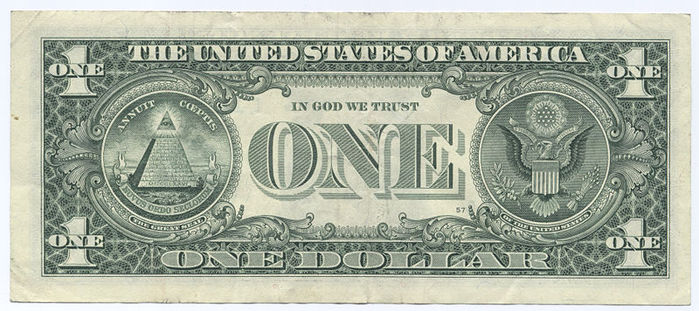
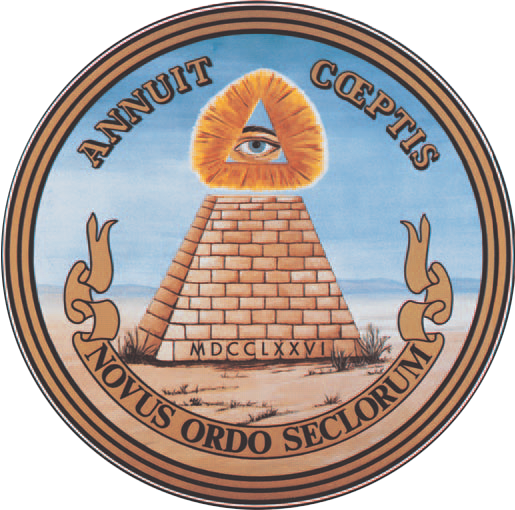
Reverse side of the Great Seal of the United States
In 1782 the Eye of Providence was adopted as part of the symbolism reverse side Great Seal of the United States. On the seal, the Eye is surrounded by the words "Annuit Cœptis" meaning "it favors our endeavors."
It is placed above an unfinished pyramid with thirteen levels, traditionally symbolizing the 13 states that originally made up the United States and the future growth of the country. The overall meaning is that the Eye, or God, approves of the prosperity of the United States. Perhaps due to its use in the Great Seal design, the eye is widely used in other American seals and emblems.
BLESS THE LORD, MY SOUL.
The “All-Seeing Eye” icon is the Divine protection of the All-Seeing Eye of the Lord!!!
The eyes of the Lord are in every place: they see the evil and the good (Prov. 15:3)
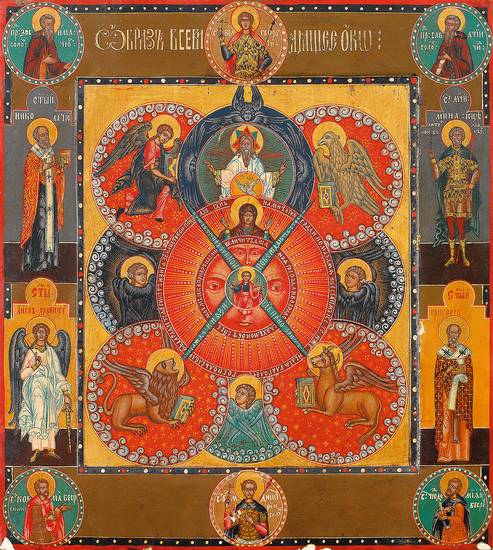
The All-Seeing Eye is a complex symbolic and allegorical composition in icon painting, symbolizing the All-Seeing God. Appears in Russian iconography from the end of the 18th century as a dome image in churches: at the top of the vault or any part of it. Later, from the dome image it turns into an image made on an icon-painting board, like an icon. The image came from Catholic iconography and is non-canonical. The dogmatic basis for such an image is the words: “Behold, the eye of the Lord is on those who fear Him and trust in His mercy” (Ps. 32:18).
The icon “The All-Seeing Eye of God” is in the Museum of the Imperial Academy of Arts. It depicts a circle concentrically composed of four, different sizes, or three circles.
The circle is the first, central and smallest, with four rays emanating from it to the edges of the last circle. Here Jesus Christ Emmanuel is depicted blessing with both hands, or rather with his right hand, and holding a scroll in his left; around the head there is a christened halo with an inscription. The rays emanating from the circle with Jesus Christ end outside the large circle, in front of the images of the four evangelists or their symbols.
The second, larger circle represents, as it were, the face of a person, on which are placed four eyes, one nose and one mouth. The inscription on the circumference: “My soul magnifies the Lord and my spirit rejoices in God my Savior.”
The third circle is more extensive. Above the second circle described above and the inscription, the Most Holy Theotokos is depicted with raised hands with the inscription above Her “MR FU”. The circle itself is intersected by many dense rays emanating from the center of the main Sun of Truth - Jesus Christ, to the right and left of Whom it is written: “Plant my eyes on the faithful earth and with you.” The inscription on the circumference: “The coal of Isaiah revealed the sun from the Virgin’s womb, rising in the darkness, giving enlightenment to those who were lost in prudence.”

The fourth circle, the largest, depicts the starry sky with three seraphim and inscriptions on the circle opposite them: “Seraphim is the word God,” or four angels are depicted on the field of the icon, two of which have scrolls at the bottom. Above the third circle and the head of the Mother of God there is also, as if at the crown of the entire icon, a circle, truncated at the bottom, in which the “Heaven of heavens” is personified with three seraphim in it, looking with fear and trembling at the Lord of Hosts, who blesses with both hands; The Holy Spirit, emanating from Him, descends in the form of a dove on the head of the Ever-Virgin Mary. The figure of God the Father below is partly closed and surrounded by a halo, along the edges of which there is the inscription: “God from heaven vouchsafes his radiance to me.” On the entire circumference of the fourth circle is the inscription: “Holy, holy, holy, Lord of hosts, fill heaven and earth with Your glory.”
In the icon, the Lord, surrounded by clouds, sits on a rainbow, at his foot is a seraphim with outstretched wings; The Lord blesses with both hands; on His chest is the Holy Spirit in the form of a dove. At the corners of the entire icon there are four circles, starting from the third and protruding beyond the fourth: they depict the symbols of the evangelists with explanatory inscriptions on the circle of the following kind: “Matthew is written by an angel.” Interpretation: “ambassador of the Lord.” “Marco pisan orlim.” Interpretation: “fly to heaven.” “Luke was written as a calf.” Interpretation: "Peace." "John is written as a lion." Interpretation: “lay in the grave.”
In addition, two angels are placed below, supporting the frame for the inscription of the icon. As the very name of the icon shows - the All-Seeing Eye, it expresses the idea of omniscience of the Lord, Who is likened to the sun as a source of light, and the method of Divine knowledge is to our highest organ - the eye: The Eye of God is the mind of God. The image of the sun, with a human face on the icon, has great importance, for in its center is depicted the God-man Jesus Christ, this righteous sun from the bowels of the Most Pure Virgin, by the influx of the Holy Spirit; as a man, He was born on earth; as God, He was born before the age of the Father. The Incarnation and Eternal Birth from the Lord and Father of Lights are expressed in the icon by images in heaven of God the Father and the Holy Spirit descending on the head of the Blessed Virgin, and by the image of Jesus Christ, enlightening the whole world and until the end of time eternally abiding with the Church He founded on earth.
Russian scientist Alexander Vinogradov wrote about the icon “The All-Seeing Eye of God”: “The image of a double human face in the form of four or two eyes, one nose and lips undoubtedly indicates the close rapprochement of the elemental sun and the Spiritual Sun - Jesus Christ the God-man, in both together the macrocosm and microcosm, for man is a small image of the great image - the world."
The symbolic face is surrounded by the figures of the four evangelists: these are the four elements, the four cardinal directions, and - if you like - the four human temperaments. Well, the starry sky, against which Christ is depicted, does not need interpretation: this is the “Sky of Heaven,” the kingdom of goodness, truth, and beauty.
The icon expresses the idea of omniscience of the Lord, who is likened to the sun as a source of light, and the method of Divine knowledge is likened to our highest organ - the eye.
The icon depicts a circle concentrically composed of three or four circles:
The first circle, central, is the smallest, with four rays emanating from it, ending behind the large circle with images of the evangelists or their symbols.
![]() (THE ALL-SEEING EYE OF GOD with the Holy Archangel Salaphiel (Selaphiel is a man of prayer, always praying to God for people and rousing people to prayer) and Spiridon)
(THE ALL-SEEING EYE OF GOD with the Holy Archangel Salaphiel (Selaphiel is a man of prayer, always praying to God for people and rousing people to prayer) and Spiridon)
The second, larger circle represents a human face, on which are placed 4 eyes, a nose and a mouth. The inscription on the circumference: “My soul magnifies the Lord and my spirit rejoices in God my Savior.”
Above the second circle and the inscription is the Virgin Mary with raised hands.
The third circle is intersected by many thick rays emanating from the center of the main Sun of Truth - Jesus Christ, to the right and left of Whom it is written: “Plant my eyes on the faithful lands and with me.” The inscription on the circumference: “The coal of Isaiah manifests the sun from the Virgin’s womb, rising in the darkness, giving enlightenment to those who are lost in prudence.”
The fourth circle, the largest, depicts the starry sky with three seraphim and inscriptions on the circle opposite them: “Seraphim is the word God,” or 4 angels are depicted, two of which have scrolls at the bottom.
Above the third circle and the head of the Mother of God, the entire icon is crowned by a circle, truncated at the bottom, in which the “Heaven of Heavens” is personified with three seraphim in it surrounding the Lord of Hosts, blessing with both hands; The Holy Spirit emanating from Him descends in the form of a dove onto the head of the Virgin Mary. The figure of God the Father below is partly closed and surrounded by a halo, along the edges of which there is the inscription: “God from heaven grant me His radiance.” On the entire circumference of the fourth circle is the inscription: “Holy, holy, holy is the Lord of hosts, heaven and earth are filled with Your glory.” The Lord, surrounded by clouds, sits on a rainbow, at his foot is a seraphim with outstretched wings; On the Lord's chest is the Holy Spirit in the form of a dove.
At the corners of the entire icon there are 4 circles of evangelists, starting from the third circle and protruding beyond the fourth; they contain explanatory inscriptions on the circles containing the name and interpretation: Matthew is written as an angel, the ambassador of the Lord; Marco is written orlim, fly to heaven; Luke is written Telchim, Peace; John wrote the lion, and laid it in the tomb.
In addition, two angels are placed below, supporting a frame for inscribing the name of the icon.
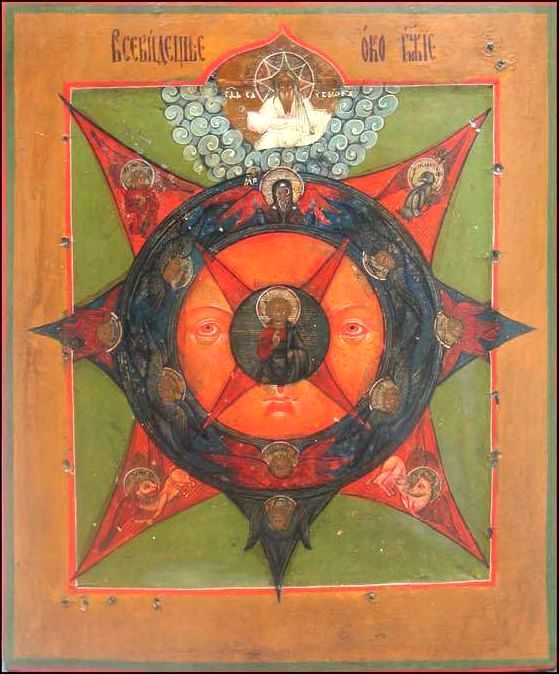
("THE ALL-SEEING EYE OF GOD" Volga region, first half - mid-19th century)
The images of God the Father, the Holy Spirit, the Mother of God and Emmanuel, located on a vertical axis that unites all levels of the universe, reflect the dogma of the Incarnation. The origins of this mysterious iconography are not known with certainty. The peculiarity of the presented icon is the placement of the “Eye” in the eight-pointed Glory. The image of the “six-winged Mother of God” is a rare detail, perhaps the only one of its kind.
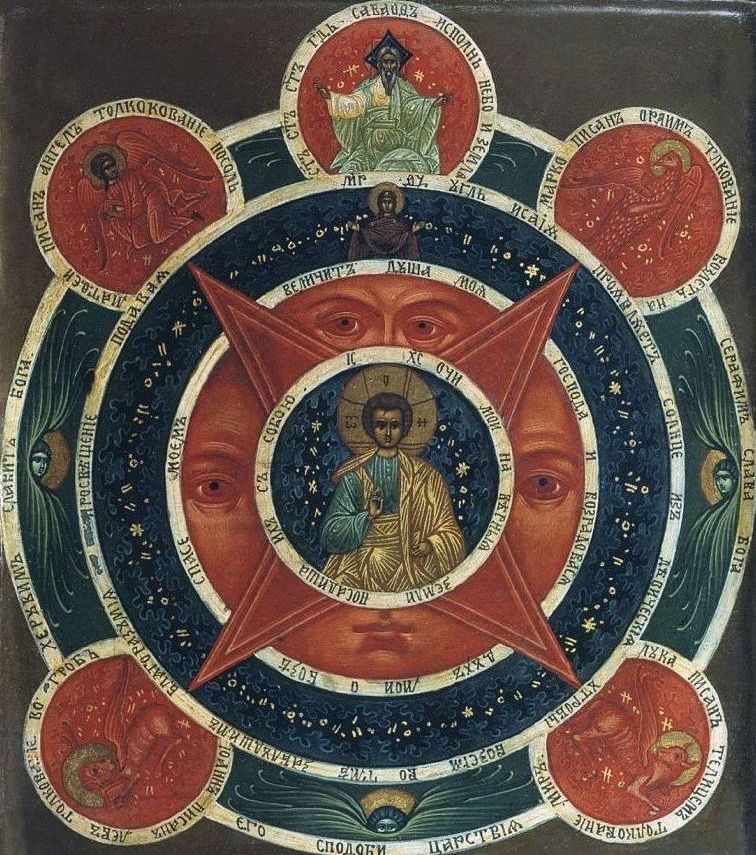
The philosopher Prince Evgeny Trubetskoy, in his childhood memoirs, shows how the receptivity of the soul was influenced by the consciousness of the all-seeing, everywhere present EYE OF GOD, “piercing the darkness, penetrating into the soul, and into the very depths of the sea,” writes Prince. Trubetskoy, “has forever remained for me one of the central – the strongest – (religious) sensations”
(quoted from the book by N.S. Arsenyev. FROM THE RUSSIAN CULTURAL AND CREATIVE TRADITION. London, 1992) (otherwise it is written that something is: both a “Masonic symbol” and “alien” to our culture, etc.)
